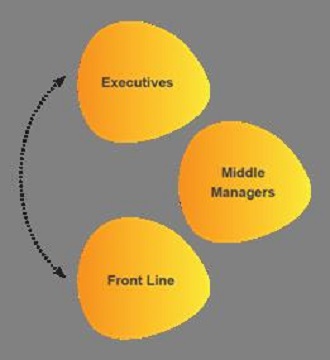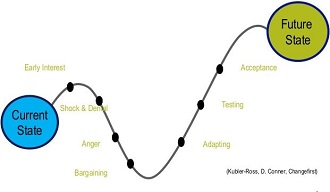Top 5 Organisational Change Stress Busters
Blog: Changefirst Blog
By Audra Proctor, Head of Learning & Development, Changefirst

In recent months I’ve been dealing with false economies in the world of change management. False economies are everywhere, with decisions and actions being put in place to save money and time proving to be a time thief, more costly and stressful in the long run. One of the fastest ways to remove stress and improve change performance is to be conscious of eliminating these false economies in the first place.
So here are my top 5 organisational change stress busters.
1. No more snarf and barf!
“The one who fails to plan, plans to fail”. The problem with copy and paste planning; one of the biggest false economies in major change, fueled by the adage “Why re-invent the wheel when the issues are mostly the same!”
I find that most people are similar when it comes to broad generalisations, but the stress of major organisational change comes from having to navigate the specifics: different resilience levels, unique responds to the disruption of change, diverse ways of receiving and interpreting critical change information.
When the seduction of snarf and barf beckons, I think use a TOOL to allow for quick diagnosis, segmentation and prioritisation of risks and issues. After all, what can be measured, can be managed! Find out more about how you can access our comprehensive change toolkit.
2. Remember haste makes waste!
The conditions are all too prevalent; imminent deadlines and a partial solution in place. Having a new HR solution or IT system at head office may be successful installation however if everyone else is still using the old one then the change has been a waste of time, money and effort.
Successful change implementation can be costly, but is nowhere near as costly and stressful as being responsible for failed or “simply installed” changes, which can extract a high people-cost, threaten leaders’ credibility and reduce organisational competitiveness.
In this situation I think CONTRACT; establishing clear expectations with key stakeholders. Well-executed learning and communication takes time to roll-out, but the real benefit is the snow-ball effect that effective early engagement creates during major organisational change.
3. Ignore informal change leadership at your peril!
“I thought I would spend a lot of time with front-line workers helping them to adopt the change. Actually, I spent the majority of my time coordinating managers, executives and other influential people to visibly support the change!” This consistent comment from fraught change practitioners is a reminder of the effort required to enroll and sustain the attention of leaders’ on major change.
Formal leaders and managers are mostly on our radar because of their ultimate accountability for a business critical change. The challenge here (not to be underestimated of course) is that change practitioners often lack the credibility to influence or challenge resistance and opposition from people who are more senior than they are.
However what can catch us off guard is the significant informal power that INFLUENCERS can wield to change the development of people’s conduct, thoughts or decisions. They exert a different type of power which is equally if not more important.
4. Beware of DIY permafrost!
When it comes to major change, the organisational climate we create could become our very own DIY permafrost kit; much in the same way that atmospheric climate is the main factor determining the existence of arctic permafrost. There is something very pivotal about the role of middle and front line managers in change implementation.
However, in many organisations these managers become dis-empowered, instead of being involved in change implementation strategies they are often by-passed and change is announced to everyone at the same time.

The issue is; even the best laid plans can be derailed by a dis empowered local manager. In this situation I am reminded to treat local managers as ADAPTERS FIRST. Help them learn the skills before you expect them to help others. After all, they are at the fore front of connecting the needs of the organisation to change with the people having to change at local level.
5. Remember “relapses are the rule rather than the exception when it comes to change!”
Prochaska, Norse and Diclemente in Change for Good.
People can be logical, emotional, uncertain, controlling, kind and adversarial all in the space of five minutes. Even if they are positive when they hear the case for change it’s entirely possible they will still resist. In other words, early interest does not mean there will be no resistance.

In this situation I think HUMAN; how quickly people cycle through the phases of change depends on the way we manage their reactions and proactively assist them through the change process.
So, there you have it, my top 5 Organisational Stress Busters. What do you think? What are yours?
Leave a Comment
You must be logged in to post a comment.







